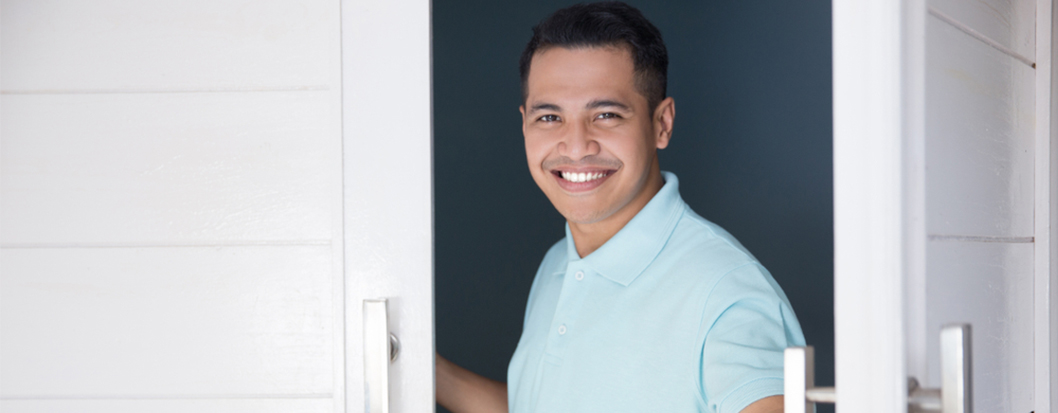Is your church a breath of fresh air?

Governments around the region have announced reopening roadmaps that include COVID safety considerations for building ventilation within places of worship. Could this have a double benefit for church-goers?
As we all know too well by now, public health advice cautions that COVID-19 can be transmitted by contact with droplets or airborne aerosols (tiny particles that float in the air) from a person with COVID-19, and contaminated surfaces.[i]
Carbon dioxide (CO2) is the air we breathe out. In any given indoor environment, when carbon dioxide levels double, the risk of COVID-19 transmission also roughly doubles, scientists report.[ii] However, poor indoor air quality can also result in headaches, dizziness and sleepiness, as well as poor cognitive function. Ever wondered why you feel sleepy during the church service? It may be high CO2 levels to blame, and not the sermon after all!
Geoff Hanmer, Adjunct Professor of Architecture at Adelaide University, writing for Eternity News explains that normal, outside air contains around 400-415ppm (parts per million) of CO2 and around 600ppm is considered best practice for indoor environments.
When CO2 levels go beyond 800ppm steps to improve the air quality should be taken. Anything above 1500ppm becomes a high risk environment and immediate improvements must be made to reduce the risk.
Prof. Hanmer advises that in indoor environments, “Good ventilation is an effective way to reduce the risk of COVID-19 infection.”[iii] He recommends a number of simple and cost-effective ways to improve and monitor air quality within your church or place of worship.
These improvements may help reduce the risk of Covid transmission, as well as the risk of your congregation nodding off during the service.
What can I do to ensure safe air quality?
- Promote cross-ventilation with open windows and doors.
Where possible, and if safe to do so, it is recommended that churches open windows and doors before, during and after indoor activities. Ensure that windows and doors won’t slam shut, which can happen with cross-ventilation. It is also a good time to check if old windows need repair.
- Monitor the air quality.
Infectious people exhale airborne viruses at the same time as they exhale carbon dioxide, so it makes sense to monitor CO2 There are many different types of CO2 meters ranging in price, but Prof. Hanmer suggests that you can obtain satisfactory results from meters that cost around $80.
- Air purifiers with HEPA filters.
If good ventilation is unable to be achieved, then an appropriate air purifier with HEPA filter will help.
- Bathroom exhaust fans.
While this isn’t the nicest thing to think about, poorly ventilated bathrooms can bring the risk of infection too. Consider installing exhaust fans and keeping them on while the building is being used.
- Conserve use of Heating, Ventilation and Air Conditioning (HVAC) systems as well as fans.
It is highly recommended that HVAC systems are regularly inspected, maintained and cleaned. Sites should avoid using the recirculated air function if possible. Also, avoid directing fans towards people’s faces, instead direct them towards the ceiling or floor. [iv]
- Seek professional advice.
Churches with large congregations or complex ventilation issues may wish to consider seeking the advice of a qualified professional with expertise in ventilation.
As restrictions are lifted, places of worship that wish to reopen will need to take the necessary steps to implement their COVID-safety plans.
General Secretary of the AUC, Pastor Michael Worker, is encouraged by Adventist churches returning to face-to-face worship, stating, “How wonderful it is that after all this time we can meet together again.”
“As we return to congregational worship, we have a duty of care as Christians to take all the steps needed for the safety of everyone, especially children and vulnerable people.” encourages Pastor Worker, “It is an opportunity to show Christian love and care.”
Further support is available by speaking with your Local Conference’s Work, Health and Safety Officer, or by reaching out to Risk Management Service (RMS).
[i] Victorian Government, Coronavirus, Religion and ceremonies sector guidance https://www.coronavirus.vic.gov.au/covidsafe-religion-and-ceremonies-guidance, accessed 13 October 2021
[ii] Science Daily website, Carbon dioxide levels reflect COVID-19 risk: Research confirms value of measuring carbon dioxide to estimate infection risk https://www.sciencedaily.com/releases/2021/04/210407143809.htm, accessed 14 October 2021
[iii] Eternity News, How to check your church building’s ventilation to ensure it is Covid safe https://www.eternitynews.com.au/australia/how-to-check-your-church-buildings-ventilation-to-ensure-it-is-covid-safe/ website accessed 13 October 2021
[iv] NSW Government, COVID-19 guidance on ventilation, https://www.nsw.gov.au/covid-19/business/covid-safe-business/ventilation, website accessed 13 October 2021
